Note: This website was automatically translated, so some terms or nuances may not be completely accurate.
Mizkan Museum Food and Life: The Four Seasons (Part 2)
On November 8, the Mizkan Group (based in Handa City, Aichi Prefecture) opened the " Mizkan Museum " (MIM). Mr. Taishi Ogawa of NTT Facilities, who handled the museum's architectural design; Mr. Kenta Shimizu of Robot, who created the exhibition's video works; Mr. Satoshi Endo of Dentsu Tech, who was in charge of planning; and Mr. Jun Naito of Dentsu Inc. Event & Space Design Bureau, the producer, looked back on the five-year production process and shared their insights.
Interview and Composition: Aki Kanahara, Dentsu Inc. Event & Space Design Bureau
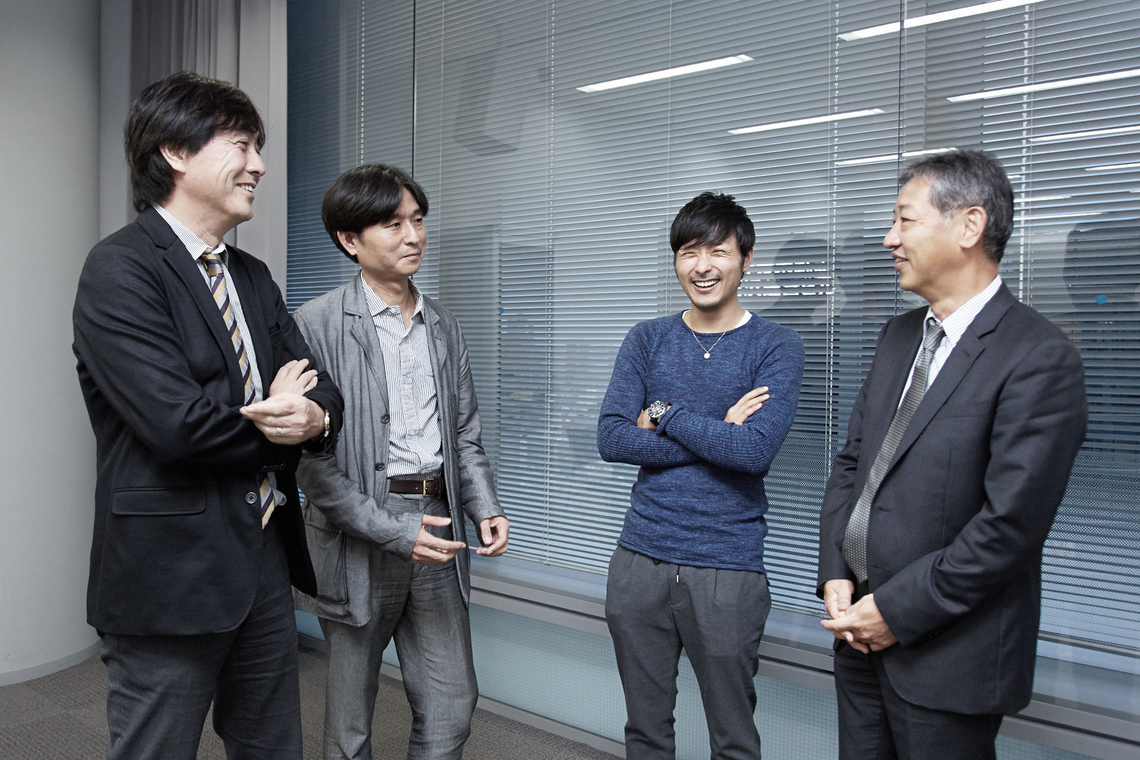
■The Great East Japan Earthquake and the Ecosystem of Handa
Naito: The project began in 2010, and the Great East Japan Earthquake occurred midway through, leading to enhanced safety and environmental considerations. In that sense, I believe it became a cutting-edge building. Were there any particularly challenging aspects?
Ogawa: Given it's a low-rise building with a large footprint, purely from a cost-effectiveness perspective, we might not have chosen seismic isolation. However, reflecting the strong commitment to safety from our Mitsukan Group clients, we planned for foundation-level seismic isolation, anticipating earthquakes specific to this location. Environmentally, we're implementing various initiatives to "harness Handa's nature," much like we did in vinegar production. For instance, since the building sits along a canal, prevailing winds cooled from the south arrive in summer. We effectively capture and utilize that breeze.
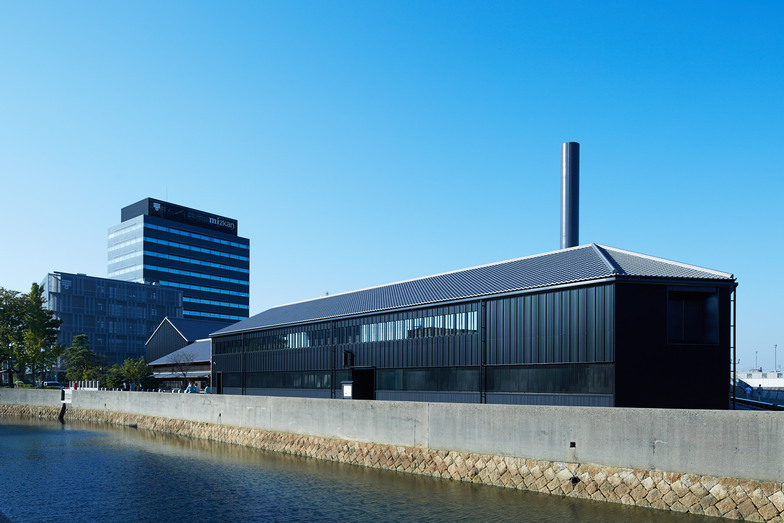
Additionally, within the headquarters area, there were several wells historically used for vinegar production that are no longer in use. We thought it would be a shame not to utilize these wells. So, we drew water from one of them, located near the intermediate experimental building, through a tunnel beneath the canal to the Mizkan Museum. After using this water for air conditioning, we channel it to a water basin for release.
Naito: The water basin in the courtyard, right?

Ogawa: We've established the overall air conditioning system by circulating water within the building, guiding airflow, and utilizing solar heat. By actively harnessing nature's blessings, we're minimizing the artificial energy required.
Naito: You also built two chimneys.
Ogawa: We boldly proposed it, and it was realized. I believe it's due to the Mitsukan Group's generosity. "Toki no Kura" is a very large space that houses the Benzaisen boat. Air conditioning the entire space would be challenging, but during transitional seasons, the warm air near the base, warmed by the glass, rises through the chimneys. This creates a draft that draws air from the lower rooms upward.
Naito: Without doing anything?
Ogawa: Without any effort, the chimneys continuously promote ventilation. By incorporating such wisdom and reviving the chimneys that once stood in Handa, we respond to the themes of "Tradition, Innovation, and Environment."
■Recreating the "Benzaisen" that Carried Vinegar from Handa to Edo
Naito: At the "Time Warehouse" exhibit at the base of that chimney, we built a Benzaisen. A large ship, 20 meters long and 5 meters high.
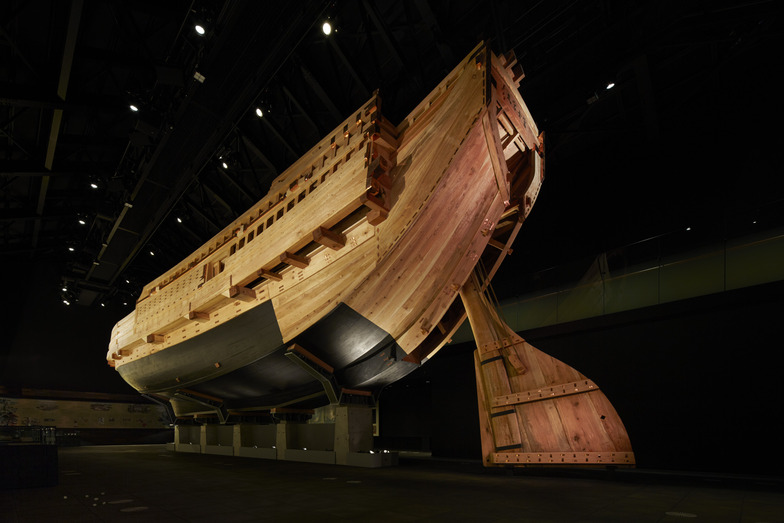
Ogawa: It's the centerpiece of the exhibit, right! We made something incredible. It's inside the museum, you know. You'll be amazed when you see it.
Naito: Planning it was easy, but I wondered if we could actually build it. It really came together. For a while, Endo-san practically became a shipwright craftsman—building that boat was incredibly tough.
Endo: We had it built at a shipyard in Matsuzaki, a town on the Izu Peninsula. First, there were no blueprints or models left anywhere for the Benzaisen design, but there were people researching it obsessively. There's a society in Japan called the Maritime History Society that studies old Japanese wooden ships. They looked into the Bishu-maisen ships that transported goods from the Chubu region to Edo. They even unearthed something like a blueprint, called an ita-zu. We designed it based on that, but finding a place to actually build it was tough. We heard a shipyard on the Izu Peninsula could build wooden ships, so we just barged in and asked them. When they agreed, it was like, "Yes!"
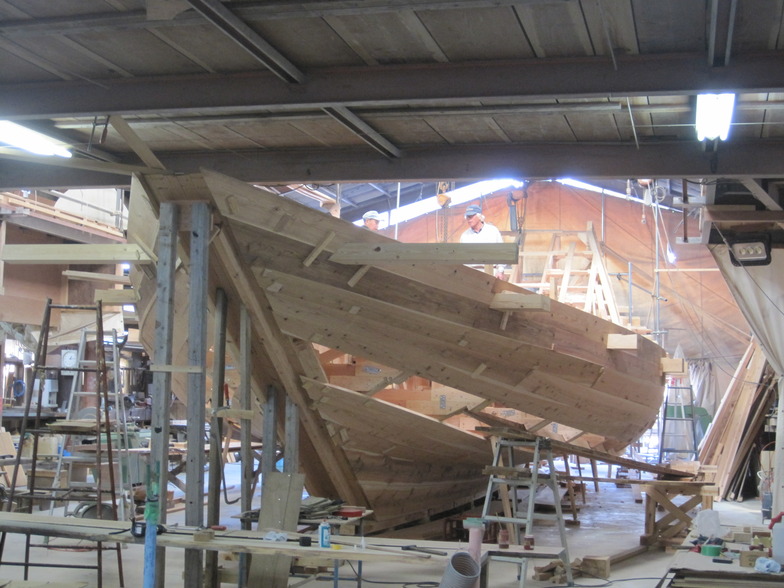
Naito: Similarly, recreating the tools for making vinegar at "Daichi no Kura," where visitors experience traditional vinegar production, was also very difficult.
Endo: That's right. Of course, the Mitsukan Group had preserved some tools, but we didn't have enough for the exhibition. For example, even if we wanted to make barrels using the authentic Handa region method, the original makers had already gone out of business. The only place left in Japan that could make similar barrels was in Sakai, Osaka. At first, they turned us away, saying they wouldn't take on an unknown client. We had to get the client to help persuade them, and finally, they agreed. They explained that the scent of cypress is preferred for sake brewing, so there was still demand, and they were making them on a small scale even now. These are called brewing barrels, and the largest ones are six-shaku barrels, exceeding two meters in size.
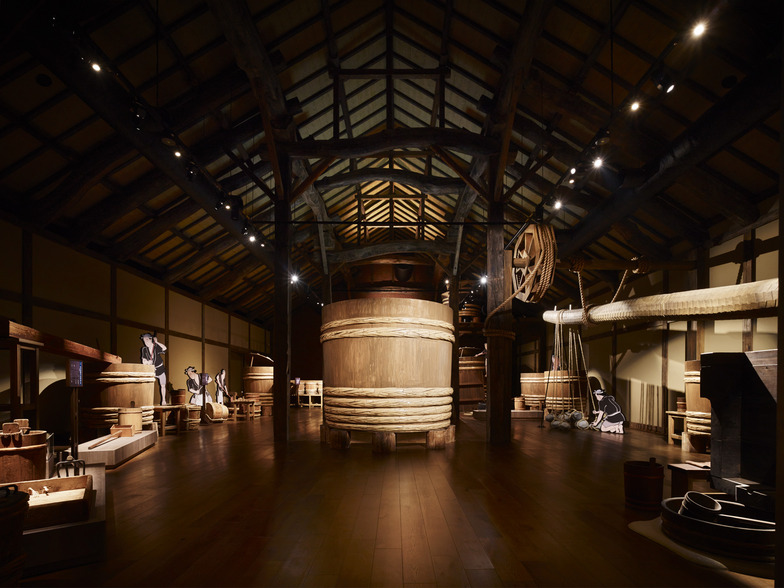
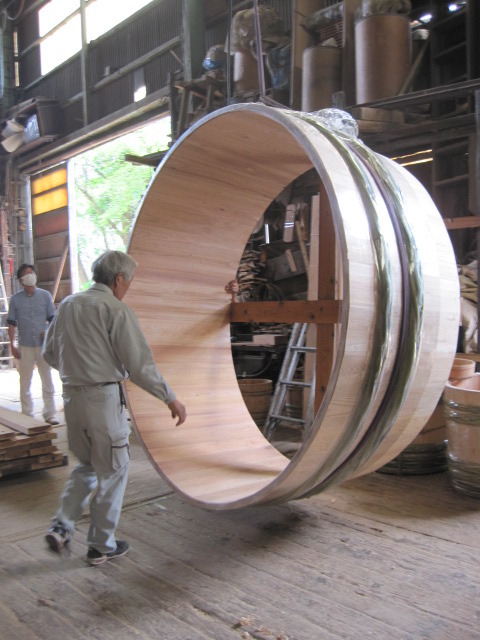
■Robots Take on Visual Expression: "Time's Cellar" and "Water Theater"
Naito: The exhibition zone features two warehouses. "Warehouse of the Earth" showcases the spirit of vinegar-making and craftsmanship in Handa. The other is the "Time Warehouse," which shows how vinegar made in Handa connected to Edo's sushi culture. Back then, the journey from Handa to Edo probably felt as monumental as traveling from Japan to Brazil today. We recreated a Benzaisen ship as a symbol of that journey from Handa to Edo. Furthermore, to effectively convey the story of how transporting vinegar led to the blossoming of sushi culture in Edo, we leveraged the power of robotic imagery.
Shimizu: "The Time Warehouse" features a whole ship placed right there. Visitors stand on the ship's deck to view a massive 3×15-meter video projection. We felt this space should deliver the most spectacular, dynamic impact—like a grand fireworks display—within the entire facility. So, we aimed to create visuals that felt fresh and new, yet were easily understood by visitors of any generation.
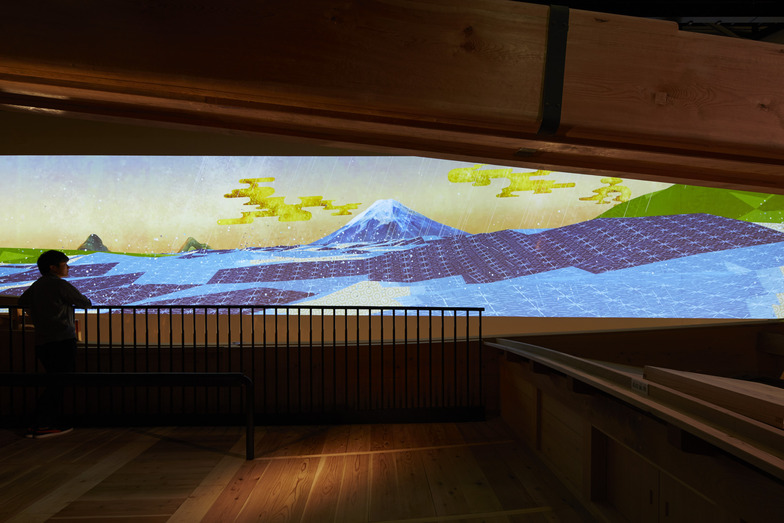
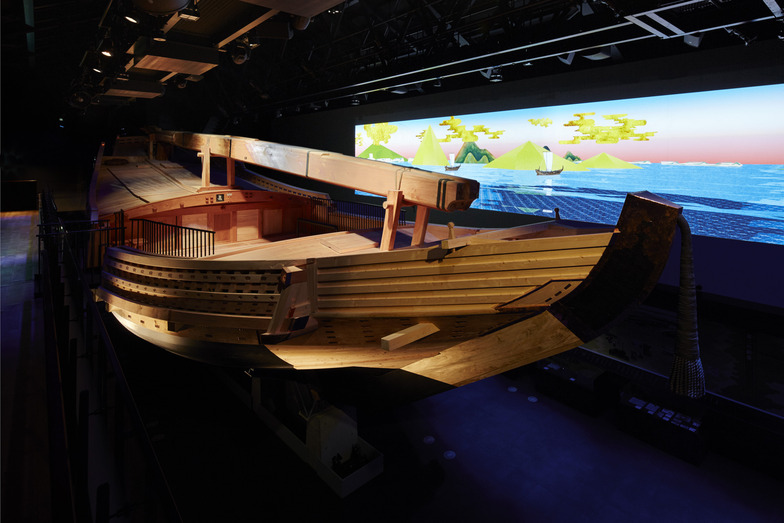
We aimed to create "unseen visuals" by skillfully blending the old and the new—whether through 3D animations reimagining reconstructed ukiyo-e designs or effectively using kanji typography to express Edo in a modern way.





Naito: The music and narration must have been challenging too, right?
Shimizu: Yes, it was. This time, we had Mr. Iguchi and Mr. Segoe from CEKAI handling the animation, Mr. Daijiro Ohara for the illustration design, Mr. Yasushi Miura of "Kuchiroro" for the music, and Mr. Seiko Ito for the narration. I believe the key to achieving something without a sense of déjà vu was collaborating with such artists with strong individual styles.
By creating sharp contrasts—depicting Mizkan's transformation and challenges with innovative visuals in "Time's Vault," then following it with the delicate imagery of "Water Theater" that gradually reveals the corporate slogan 'What eventually transforms into life.'—I believe we achieved greater synergy.
■Growing with the Community: A Facility Where People Connect
Naito: The facility opened to the public on November 8th. If there's one final spot you'd like visitors to see, please tell us.
Ogawa: Exhibitions often tend to be closed off, while architecture desperately tries to incorporate its surroundings. Finding that connection point was something I wanted to achieve even when I was involved in the planning. The front windows of the "Wind Corridor" are a perfect example of exhibition and architecture merging. The outside scenery itself becomes part of the exhibit.
We hope visitors will sense the narrative where water serves as the axis blending exhibition and environment: entering the facility while viewing the canal, enjoying the vinegar-making exhibit, then seeing the shimmering water after the "Water Theater" video ends, followed by the courtyard with its water basin opening up. Similarly, we hope events held in the courtyard will help the facility become a place with a broader connection to the community.
Endo: For me, it's definitely the "Time Warehouse." I have a deep connection to shipbuilding. Since ships are made of wood, they're living things that gradually change color, turning yellow. I want people to appreciate that transformation too. Also, the walls around the ship feature a pictorial scroll depicting the history of Mizkan. It was incredibly labor-intensive to create. It shows a ukiyo-e-style landscape with many figures depicted within the painting. The founder of Mizkan, Nakano Mataemon, is also depicted within this scroll, so please take a close look at that part too.
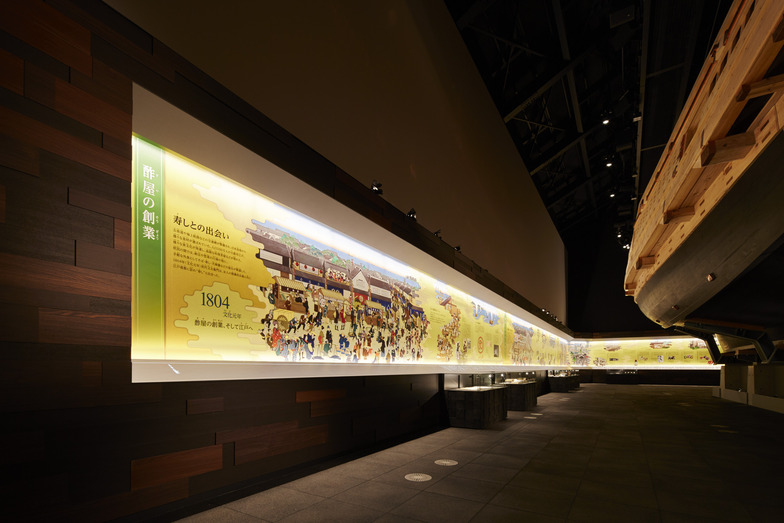
Naito: We'd love for you to come back a second or third time to see the details.
Shimizu: It's about the role of each zone and their synergy, I suppose. For example, earlier I mentioned that "Time's Vault" is like a fireworks display. Then, the subsequent "Water Theater" is like sparklers. It's because we have sparklers that we appreciate the fireworks display. The key is that while they seem unrelated at first glance, they're actually connected. Just as the seasons make winter cuisine taste better because summer exists, and winter makes us long for summer's heat again. Old things make new things stand out, and vice versa, I believe.
Ogawa: We planted several cherry trees at the Mizkan Museum, arranged so different varieties bloom slightly out of sync. The groundcover in the courtyard is also moss phlox, so it should turn pink around April or May. We've incorporated other seasonal features too, so I really hope Mr. Shimizu will film those someday.
Shimizu: I'd love to film it!
Naito: I hope it becomes an even more wonderful facility as time goes on. Thank you very much for today.
Was this article helpful?